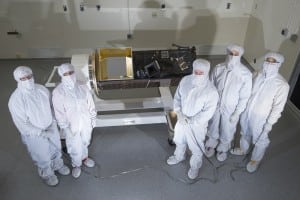
The U.S. Air Force’s Operationally Responsive Space (ORS) office has completed a flight readiness review for the ORS-5 space-tracking satellite, keeping the mission on track for an Aug. 25 launch, the service announced Aug. 18.Built by the Massachusetts Institute of Technology's Lincoln Laboratory, ORS-5 is slated to lift off on an Orbital ATK [OA] Minotaur IV launch vehicle from Launch Complex 46 at Cape Canaveral Air Force Station in Florida. A four-hour launch window opens at 11:15 p.m. Eastern time.ORS-5,…

 By
By 








